
Imaging notes: RC collimation
Much has been written about the merits of telescope collimation, that is,setting the precise alignment of the optical
elements within a telescope to produce sharpest images possible from that instrument.
Atmospheric turbulence or "seeing" can easily mask collimation errors,
hence one should only perform fine agjustments on nights of good seeing ( 4 or 5 on the scale below)

Also be aware that guiding/tracking errors during sub-exposures can also cause stars to appear elongated.
This effect is uniform, and can be seen across the entire image field, rather than just the edges/corners of the image,
and should not be confused with optical alignment errors.
Here is a summary of the steps taken here to collimate a Ritchey Chretien telescope,
however they can also be applied to other Cassegranian configurations.
CCDinspector, while a good tool for close alignment, can give erroneous results
depending on the bightness and location of field stars.
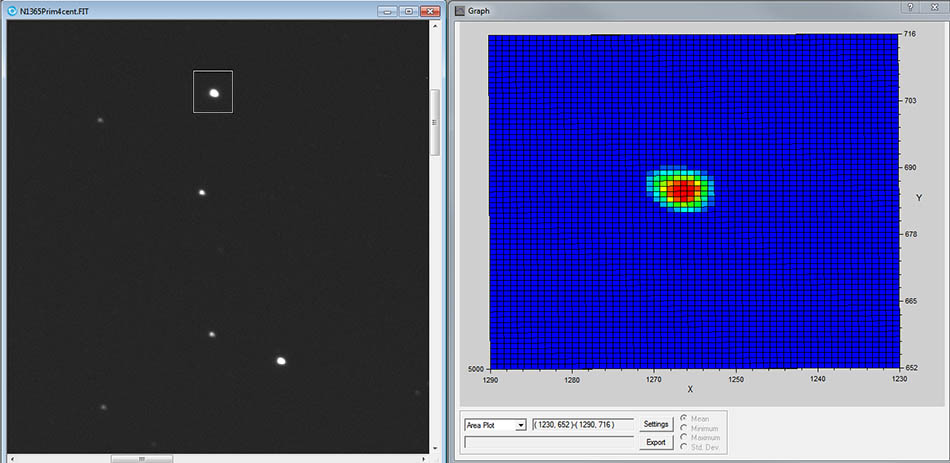 |
Left : a mis-collimated telescope optic, Note the elliptical (oriented 4-10 o'clock) stellar profile. |
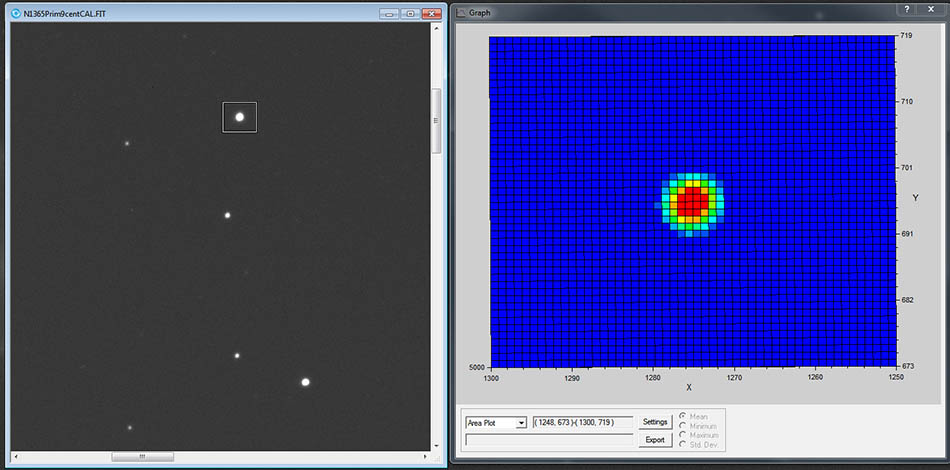 |
Left: optics collimated as good as the seeing would allow, Note the near-perfect circular intensity profile at the extreme edge of the KAF16803 field of view |
The method used here was:
1) Align secondary using Glatter laser collimator fitted with Glatter's concentric ring hologram,
alignining for perfect beam reflection back to the laser
AND perfect ring symmetry around the centre baffle tube to the primary mirror's edge.
2) Initial primary collimation using a Takahashi alignment telescope
3) With the CCD operating in focus mode (i.e.updating the image continuously) de-focus a star in the centre of the field out to about 4-5 diffraction rings in diameter.
4) Using a 2x-4x image enlargement, assess the symmetry of the secondary shadow within the diffraction rings.
5) Adjust the primary (only small changes should be required) to make the position of "the hole in the doughnut" perfectly central.
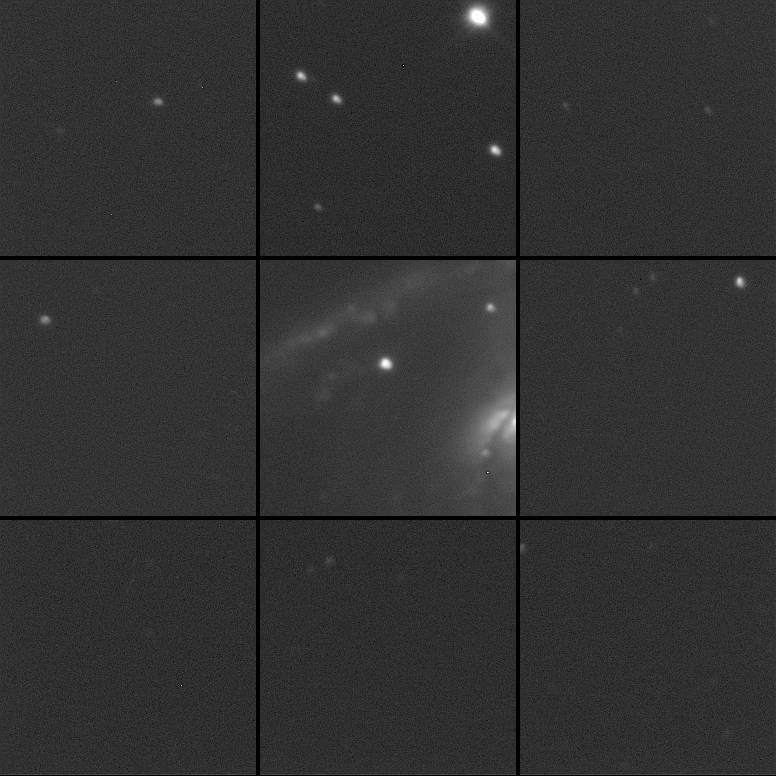
Above: centre and extreme corners of a KAF16803 sensor before collimation
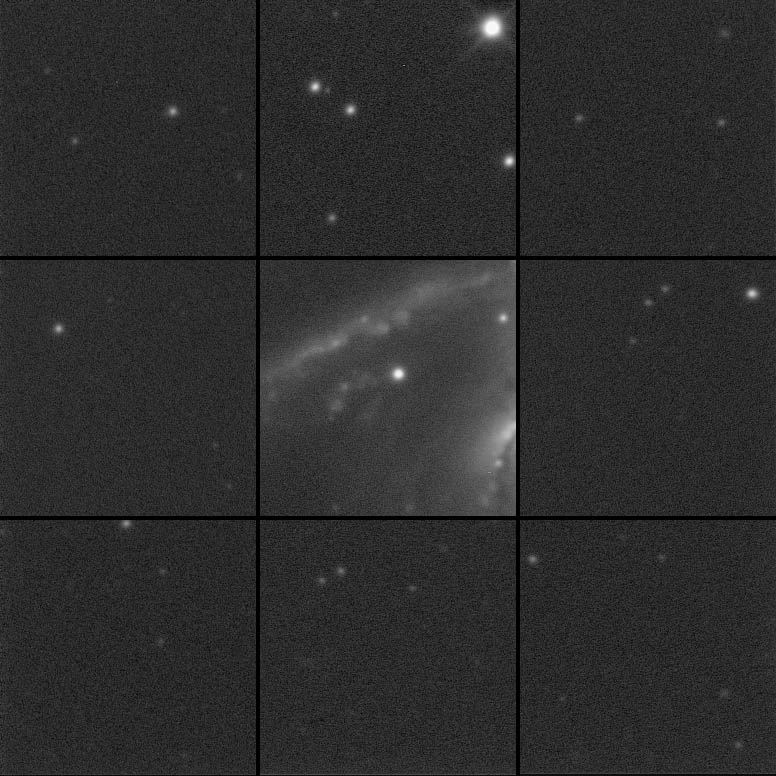
Above: centre and extreme corners of a KAF16803 sensor after collimation
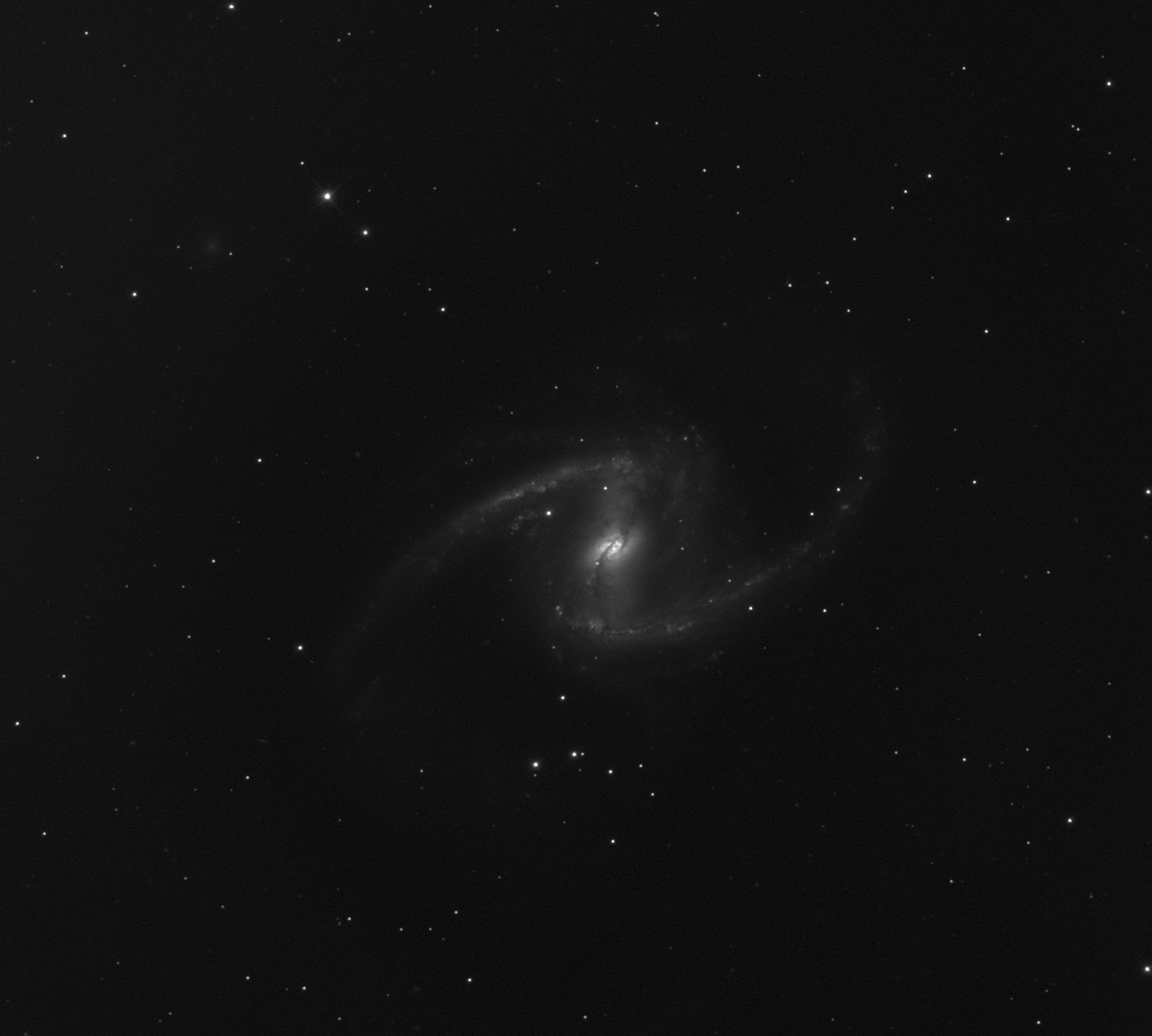
Above: 100% resolution, SBIGSTX16803 centre crop image of NGC1356, darks and flats only,
2x 600 second exposures (under a full moon) , self guide mode, guiding corrections every 3 seconds.
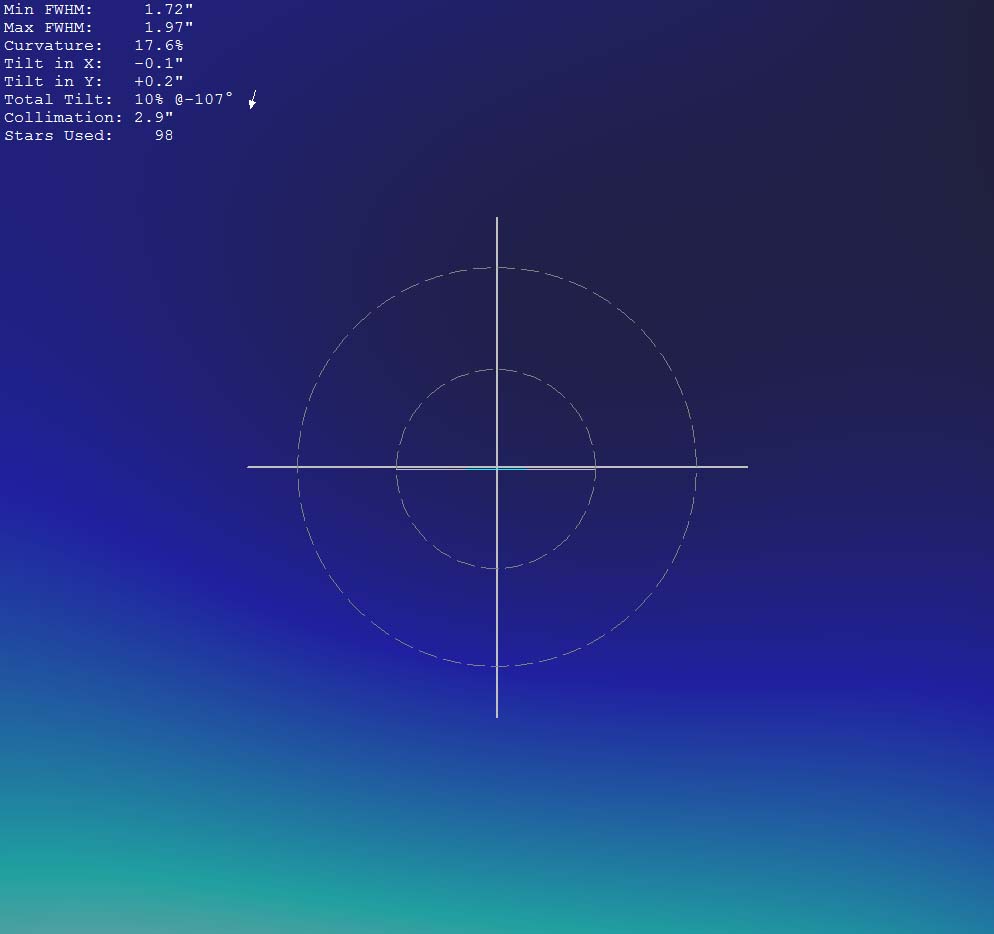
CCDinspector's take on the alignment..... 1/10th of an arc sec in X and 2/10th's in Y.
Bugger! Still not perfect.....
FWHM's at a focal length of 3400mm about 1.8 arc seconds.